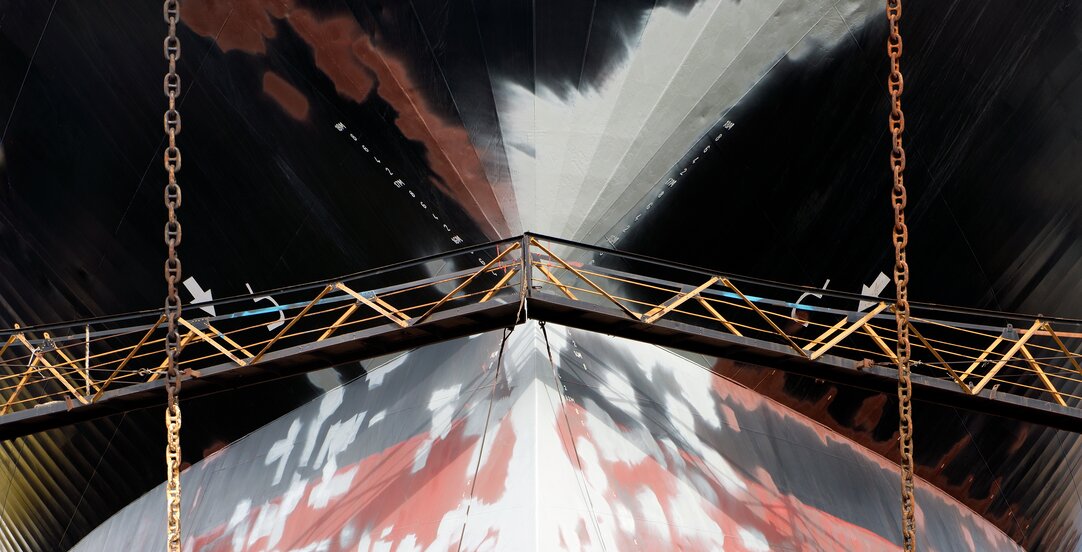Shipbuilding – the consequences of disruption by buyers

In the lead-up to delivery under shipbuilding and offshore fabrication contracts where delivery is delayed, buyers may, from time to time, face claims that they have disrupted the contractor’s progress in such a way that the contractor is entitled to an extension of the delivery date and/or damages for the additional costs incurred. A recent ruling from the Norwegian Supreme Court involving land-based construction clarifies the requirements as to causation for such a claim to succeed.
Reading time 5 minutes
The clear starting point under standard Norwegian shipbuilding and offshore fabrication contracts is that the contractor is responsible for delivering the vessel or unit on the agreed delivery date at the agreed price and that delays beyond this delivery date entitle the buyer to liquidated damages. Such liquidated damages have a double role, serving as a predefined compensation for the buyer’s losses on the one hand and a limitation of the contractor’s liability for the buyer’s resulting losses on the other.
The basis for disruption claims
From this starting point, there are several categories of exceptions, including (a) force majeure, (b) changes to the contract scope and (c) so-called disruption claims (Norwegian: Plunder og heft), which is essentially a bucket category for claims for extra time or compensation due to delays or cost overruns caused by the buyer or circumstances for which the buyer bears the contractual risk. Frequently, disruption claims are based on a number of alleged acts or omissions by the buyer, each of which, if viewed individually, may not constisute a breach of contract by the buyer or a clearly identifiable cause of a specific delay, but which, when viewed in the round, are alleged to have had a cumulative effect.
Two approaches to the problem of causation
If the contractor is able to prove that the construction process has in fact been disrupted in the legal sense by the buyer, the next question is that of causation. Even in situations where the buyer has interfered with construction, delays and budget overruns tend to result from an interplay between problems attributable to the buyer and problems attributable to failures of planning and execution by the contractor. It may therefore be a very demanding exercise to create a direct causation between the disruption event and the relevant loss or delay.
In determining whether there is sufficient causation for a disruption claim under a shipbuilding or offshore fabrication contract to succeed, it is relevant to look at how this question is approached under standard Norwegian land-based construction contracts, due to the evident similarities between these contract types. In this regard, most land-based construction contracts give the contractor the right to demand adjustment of the contract price in circumstances where the contractor’s efficiency has been disrupted by reasons for which the buyer is responsible. This principle is now considered part of the background law for such contracts.
How to treat the question of causation has, on the other hand, been contested, with lower courts tending to favour one of two widely divergent approaches, leading to uncertainty about how disputes will be resolved:
- In the so-called top-down approach, the courts have first determined whether the buyer is contractually responsible for disrupting the contractor’s performance. If the court finds this to be the case, the starting point for the award is a comparison between the contractor’s budget and planned schedule and the actual costs and time spent, adjusted to reflect the effects of other contractual adjustment mechanisms. This approach is simple to apply, but can shift too much of the contractual risk to the buyer in situations where the contractor bears some of the responsibility.
- In the so-called bottom-up approach, the courts have – after making an overall determination as to whether there has been disruption by the buyer – required the contractor to prove how the buyer’s disruptive acts or omissions have caused each specific productivity loss on the part of the contractor. This approach adheres more strictly to the principle of a fixed-price contract, but can make it difficult for a contractor who has been subjected to disruption to prove its claim to the court’s satisfaction.
Clarification from the Norwegian Supreme Court
In a recent ruling on disruption claims stemming from a land-based construction contract (HR-2019-1225-A), the Norwegian Supreme Court has clarified how to approach the question of causation, coming down clearly in favour of the bottom-up approach.
The case concerned a contract for the rehabilitation and improvement of a stretch of public road in eastern Norway based on the NS 3430 standard contract, with a contract price of approximately NOK 140 million. The contractor demanded additional compensation of approximately NOK 30 million for disruption, on the grounds that its ability to perform under the contract was disrupted by circumstances for which the buyer was responsible. Among other things, the buyer had failed to have trees and cables along sections of the road removed prior to the start of construction and to complete necessary purchases of land.
The Supreme Court ruled that the question of causation must be resolved in two stages.
In the first stage, the contractor must prove that disruptive circumstances for which the buyer is contractually responsible have actually occurred. Relevant questions here include whether the circumstances in question are the buyer’s responsibility, during what time periods they have occurred, and what consequences they have had for the contractor’s scheduling and efficiency.
Once disruption has been established, the contractor must in the second stage prove causation between the disruptive circumstances and the specific extra costs incurred by the contractor as a result thereof. However, the Supreme Court made it clear that the burden of proof should not be set too high, and that the contractor cannot be required to prove the exact economic consequences of each of the individual circumstances for which the buyer is responsible.
Nonetheless, the judgment underscores the importance from a contactor’s point of view of documenting disruptive acts or omissions by the buyer as they occur along with their consequences, with relevance also for disruption claims under shipbuilding and offshore fabrication contracts. It puts emphasis on the ever-important job of good contract management and keeping track of the critical path – and disruptions to it.

